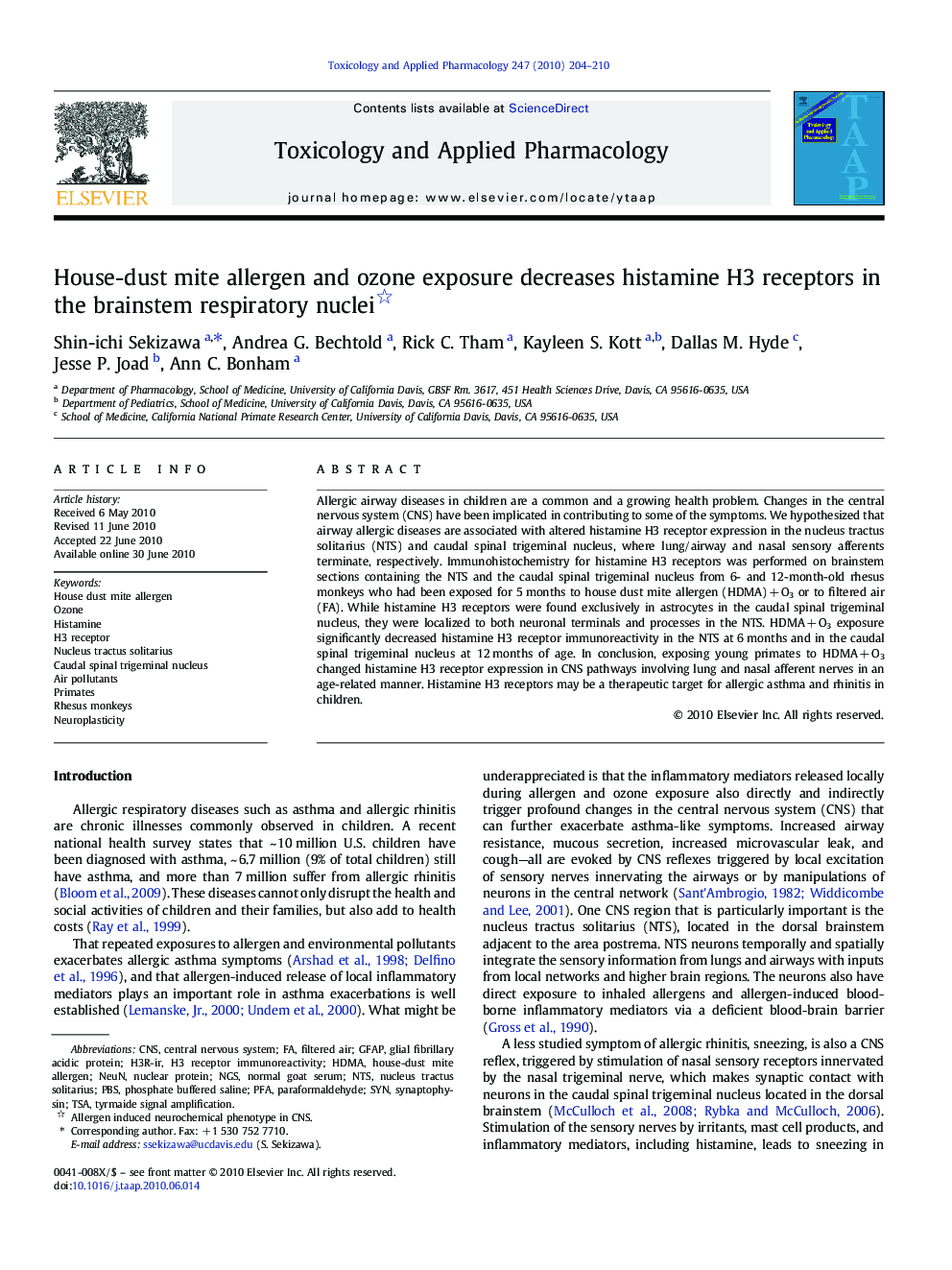| Article ID | Journal | Published Year | Pages | File Type |
|---|---|---|---|---|
| 2569553 | Toxicology and Applied Pharmacology | 2010 | 7 Pages |
Abstract
Allergic airway diseases in children are a common and a growing health problem. Changes in the central nervous system (CNS) have been implicated in contributing to some of the symptoms. We hypothesized that airway allergic diseases are associated with altered histamine H3 receptor expression in the nucleus tractus solitarius (NTS) and caudal spinal trigeminal nucleus, where lung/airway and nasal sensory afferents terminate, respectively. Immunohistochemistry for histamine H3 receptors was performed on brainstem sections containing the NTS and the caudal spinal trigeminal nucleus from 6- and 12-month-old rhesus monkeys who had been exposed for 5Â months to house dust mite allergen (HDMA)Â +Â O3 or to filtered air (FA). While histamine H3 receptors were found exclusively in astrocytes in the caudal spinal trigeminal nucleus, they were localized to both neuronal terminals and processes in the NTS. HDMAÂ +Â O3 exposure significantly decreased histamine H3 receptor immunoreactivity in the NTS at 6Â months and in the caudal spinal trigeminal nucleus at 12Â months of age. In conclusion, exposing young primates to HDMAÂ +Â O3 changed histamine H3 receptor expression in CNS pathways involving lung and nasal afferent nerves in an age-related manner. Histamine H3 receptors may be a therapeutic target for allergic asthma and rhinitis in children.
Keywords
PBSNeuNNTSCaudal spinal trigeminal nucleusPFAHDMANGSGFAPTSAAir pollutantsHouse dust mite allergenOzoneCNSnormal goat serumcentral nervous systemSynaptophysinSynPhosphate buffered salinePrimatesrhesus monkeysNeuroplasticitynucleus tractus solitariusfiltered airHistamineparaformaldehydeGlial fibrillary acidic proteinNuclear proteinH3 receptor
Related Topics
Life Sciences
Environmental Science
Health, Toxicology and Mutagenesis
Authors
Shin-ichi Sekizawa, Andrea G. Bechtold, Rick C. Tham, Kayleen S. Kott, Dallas M. Hyde, Jesse P. Joad, Ann C. Bonham,
